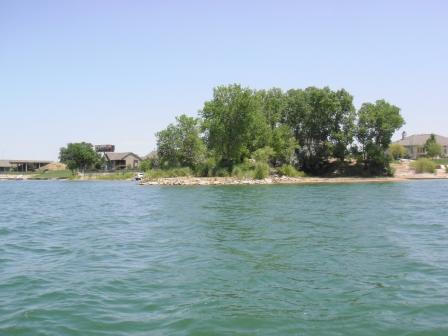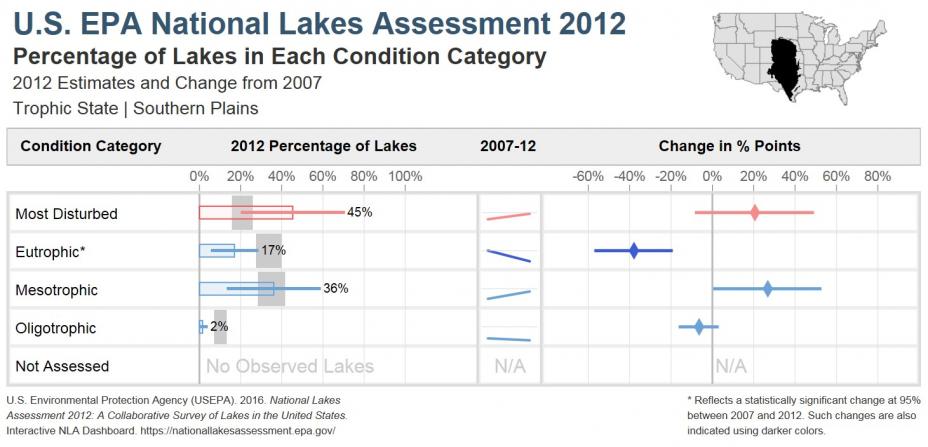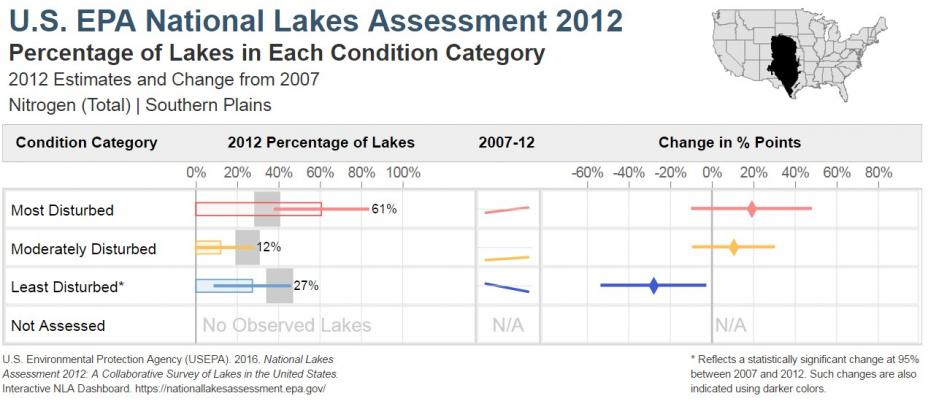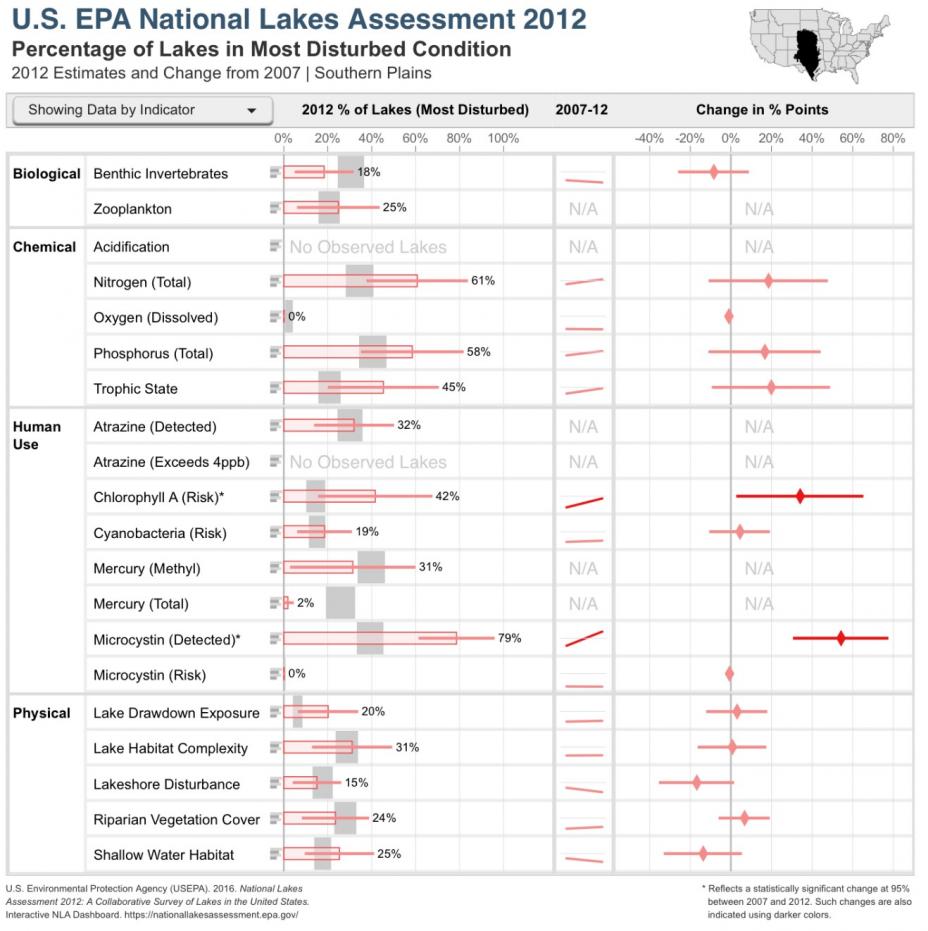Southern Plains Ecoregion - NLA 2012 Results
- Overview
- Coastal Plains
- Northern Appalachians
- Northern Plains
- Southern Appalachians
- Southern Plains
- Temperate Plains
- Upper Midwest
- Western Mountains
- Xeric
- NLA Dashboard
A total of 7,734 lakes in the Southern Plains ecoregion are represented in the NLA. Of these lakes, about 10% are natural and 90% are man-made.
Key Results
Trophic State and Key Stressors: The NLA uses trophic state as an important indicator of lake condition and assesses the extent of key stressors in the nation’s lakes.
- In the Southern Plains, 45% of lakes are rated as most disturbed based on trophic state, 17% are eutrophic, 36% are mesotrophic, and 2% are oligotrophic.
- The most widespread stressors assessed are nitrogen (61% of lakes), phosphorus (58%), and lake habitat complexity (31%).
Human Use Condition: Cyanobacteria is one of three algal toxin related indicators presented in the NLA (see also chlorophyll a and microcystins). It serves as a proxy for the presence of algal toxins.
 NLA 2012 sampling in Blue Lake, Kansas.
NLA 2012 sampling in Blue Lake, Kansas.
- Based on cyanobacteria cell counts, 19% of lakes in the Southern Plains are in the most disturbed condition (i.e., pose a high risk of exposure to algal toxins).
Change from 2007 (for lakes >4 hectares)*:
- For the Southern Plains, the NLA reports a 34% increase in the proportion of lakes in most disturbed condition between 2007 and 2012 based on the condition of chlorophyll a risk.
To access more indicator graphics please visit the interactive NLA Dashboard.
* The change analysis is based on information from two points in time – 2007 and 2012. The change in condition analysis only considers lakes 4 hectares and larger because smaller lakes were not sampled in 2007.



